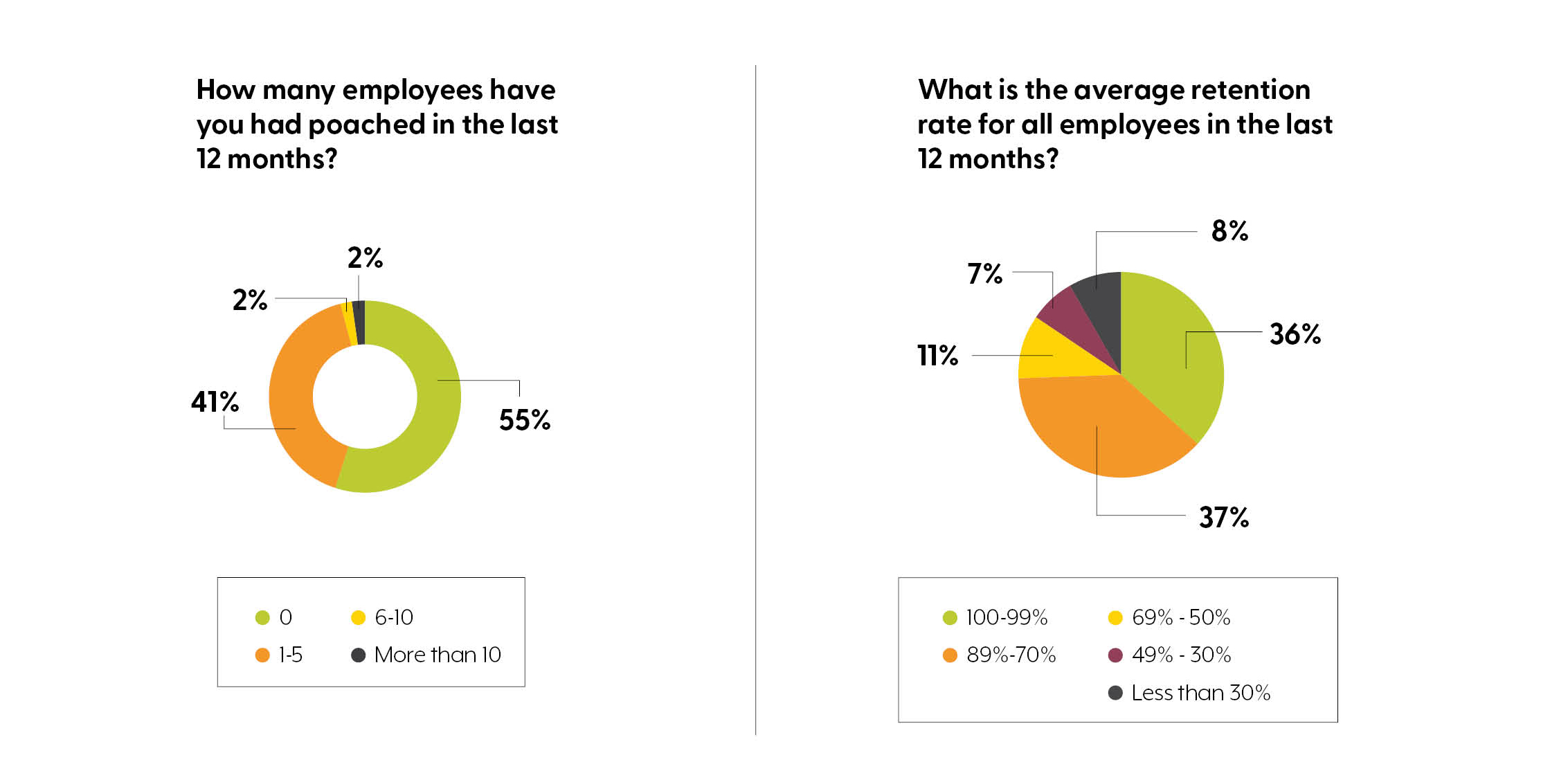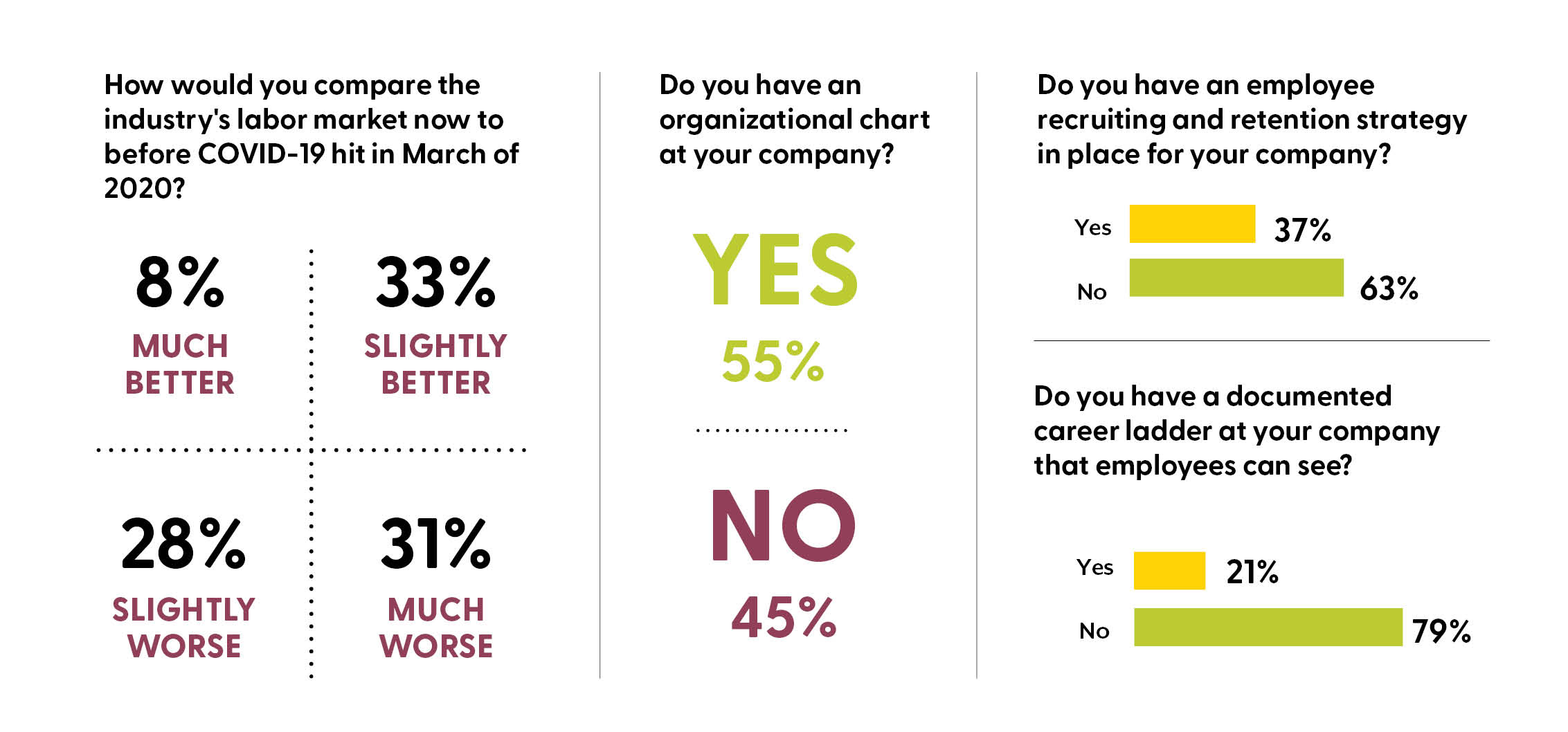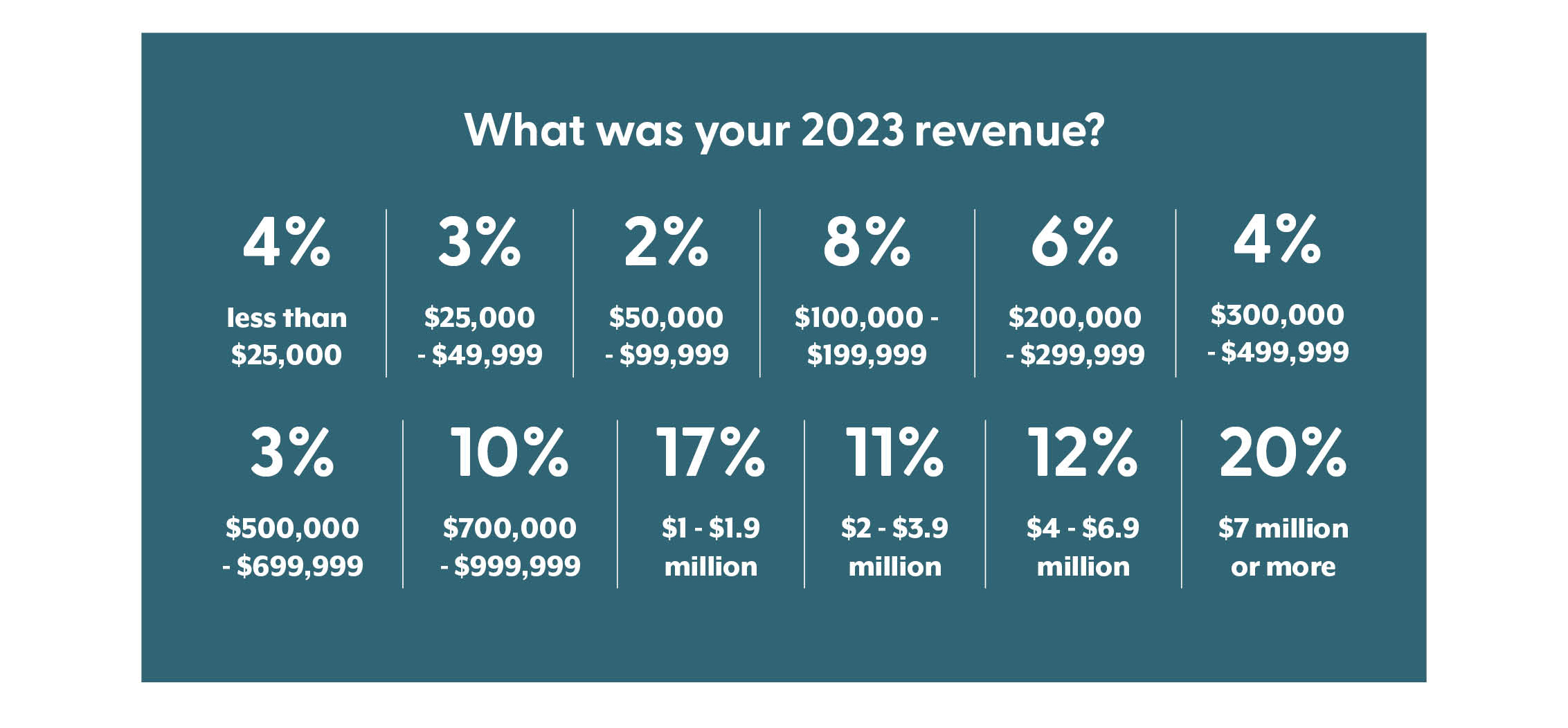
Kristin Cronin
General manager of Ramone’s Landscaping, Wilmington, Delaware

Ramone’s Landscaping
Kristin Cronin says ever since she came on board at Ramone’s in 2021, labor has been the biggest struggle for the small, family-owned and operated business.
“Minimum wage has gone up, and the cost of living alone has gone up," she says. "Just a couple of years ago, we could have paid somebody $15 or $16 an hour and we’re now paying that same person $21 or $22 an hour. That’s been a struggle just in its own.”
The company, which specializes in lawn care, landscaping and some hardscaping, employs around 13 people during peak season. In 2023, they did about $1 million in revenue. And not only is labor costing more nowadays, but Cronin says it’s even harder than before to find quality candidates who get you a return on your investment.
With having to pay employees so much more, Cronin says price increases are just inevitable. But thankfully, clients have been understanding and accommodating for the most part. She says it’s because of the service Ramone’s is offering despite the higher price tag.
“What we’re promising to the customer is extreme quality because they are paying way more than they did five years ago,” Cronin says. “When we had to increase our pricing to have quality employees, we made it into a quality guarantee. Yes, it might cost a little more, but we will guarantee we’ll do a quality job and it’s going to be worth the price.”
Cronin adds that quality guarantee has become something that’s interwoven into the entire mentality of the company.
“That idea was a big thing we’ve incorporated into our training. In order for the employees to make those rates, we want them to deliver the quality service we’re promising to the customers,” she says. “We told them, ‘These people are paying almost twice as much for you to come work, so we need to make sure we are delivering excellence.’”

While almost everyone was able to get on board with this new philosophy and flourish during the revised training, Cronin says there were a few who decided to part ways.
“It came down to the point that the industry is changing, competition is changing, pricing is changing — and anyone who wasn’t receptive to the training or understanding of that just didn’t fit into our culture,” she says.
Cronin says putting quality first hasn’t only improved training and performance, but culture as well. She adds that the employees are better able to train new hires and instill the company’s culture from the get-go.
And culture has become the new focus for Cronin and Ramone’s Landscaping.
“These guys are delivering and coming through for us,” she says. “They’re holding up the word we put out to our customers. So, I’m really working on company culture and incentives for them.”
Cronin says bonuses and allowing employees to accept tips from customers (something they were not permitted to do before) has also helped improve culture.
For the season ahead, Cronin says she expects the team to not only be fully staffed but she has a list of qualified candidates ready to jump in if needed.
“Going into the new year, we’re staffed for projected sales of $1 million again,” she says. “I’d like to do more, and I’d like to grow the team — but I think slow and steady wins the race at this point. I think we need another year of working with this team and homing in on the training aspects and culture and just developing the guys we have. Then we can move forward.”

Cullinan Irrigation
Frankie Cullinan
Owner of Cullinan Irrigation, Rogers, Minnesota
When Frankie Cullinan put out advertisements seeking a new irrigation technician, he thought it’d be a complicated process that would take months to complete. He has heard the industry-wide horror stories: businesses have lots of work but can’t find anyone willing to do it.
Maybe it helps that Cullinan Irrigation just focuses on that lone segment of the industry (while also dabbling in dethatching, aeration and a four-step DIY fertilizing program). And sure, it probably helps that the company only relies on a handful of employees — Cullinan himself, another technician and a pair of part-time helpers in the field. But Cullinan had braced himself for a process that ultimately took just a few weeks.
It surely didn’t hurt he started the full-time technician at $36 an hour.
“Big picture, (that higher pay) helps keep them around,” Cullinan says, adding that he’d rather avoid paying more to hire the next guy up when someone quits. “We’ll save that couple grand for the turnover.”
Cullinan says he tries to stay near the top of what others are paying wage-wise in his area. He keeps tabs on this by keeping constant connection with the other irrigation companies in the area. He admits it’s easier because he specializes in one segment of the industry, whereas other companies might have to network with companies that offer all sorts of services and, likewise, all sorts of pay ranges. They’re also helping other landscapers in the area because of their specializations, so they’re often talking, too.

But keeping relationships has also helped Cullinan in another area — he works closely with a high school woodshop teacher who recommends a few students to his company each spring to fill his part-time work. He continues to refer new part-timers after working closely with them in class. The skillsets required in woodshop aren’t necessarily applicable in irrigation, but Cullinan believes the teacher largely filters out bad work ethics.
Cullinan has operated since 2004, and he can only count a few times where the employees didn’t work out because of “general teenager stuff” like staying on their phones or not putting in the necessary work. “We’re a pretty small company,” he says, “so you have to pull your weight. We have to produce using only two crews.”
For his part, Cullinan rewards his part-timers roughly $24 an hour, further incentivizing that work ethic. He believes other local companies often pay somewhere between $18 to $20. Cullinan says the job training for part-timers is easy — they dig holes and help change out faulty valves or heads.
“We really just train them on the job,” Cullinan says. “They ride in the truck with the lead (technician), and it’s more general labor stuff. Training is pretty straightforward. You can pick it up pretty quick.”
Cullinan knows he’s got a bit of work to do in finding labor this offseason. When he returns from his annual vacation, he’ll need to find new field laborers because they all graduated from college last year after staying with him for four seasons. Now, they’re on to jobs in their respective career choices, so it’s back to the drawing board for Cullinan.
Between his pay rates and the help he’s received in recruiting younger employees, Cullinan says it’ll all work out just fine.
“I haven’t started looking yet for this year,” he says, “but I feel confident when I get back in town.”

of Haase Landscape
Chris Haase
President of Haase Landscape, Spokane Valley, Washington
Up in Washington State, where they have the highest minimum wage outside of Washington D.C., Chris Haase says labor has always been an issue.
"For a long time, we were the highest minimum wage. It’s now $16.28 an hour,” he says.
The company, which has 50 employees at the height of the season and raked in about $5 million in revenue in 2023, is paying entry-level employees even above the state’s minimum wage to be competitive in their market.
“We start at about $17.50 for no experience at all and it goes up from there,” he says. “Our highest guys are up past $30 an hour now.” Though this hasn’t always proven to be helpful; Haase admits finding quality employees is still an issue.
“Last year I don’t think we ever stopped having ads running to get labor. We just sent out our W2s, and I think we had 92 of them so that’s a lot of turnover in some places,” Haase says. “There’s people looking for work but of course landscaping isn’t the easiest thing to do — it’s physical work, so when McDonalds and Starbucks have you making the same amount of money, it’s easy to go to work for one of those guys.”

is having an ice cream freezer.
Despite the struggles, Haase says he expects to be staffed for the season ahead. “We have enough people coming back,” he says. “We try to build a nice enough culture here that people want to come back and work here, and if people leave because they think the grass is greener somewhere else, most of them try and come back.” With a limited labor pool, Haase says it all boils down to culture in a competitive market like his.
“We’re all offering the same wages and benefits so it’s all about the culture,” Haase says. “We try to do enough things for the guys with lunches, snacks and different things to keep them happy.”
Haase says the best thing he ever did was just before COVID when he installed an ice cream freezer in the shop, so crews could stop and grab a cold treat before heading out the door.
“I didn’t think it was a big deal, but it’s something the guys really appreciate,” he says. “When it runs low, they notice. It’s a simple thing to bring to your company.”
Because Washington summers can reach 90 or 100 degrees, Haase says making sure his employees stay cool is critical.
“We buy a pallet of Gatorade so they can take some with them whenever they want it,” he says. “And we have a commercial ice machine, so they always have ice for their coolers and their water jugs. They can take that with them and even take some camping on the weekends, too.”


Haase says sometimes it’s the little things that make the most difference when it comes to retention.
“We’re always trying to think of new ways to take care of people and give them what they need so they feel important around here,” he says. “For us, retention is all about just taking care of people how you’d want to be taken care of. It’s that simple.”
Haase says he also focuses on having newer equipment to not only attract employees but also to make up for times when labor is running low.
Just last year, he made an investment for his mowing crews that paid off tremendously.
“We buy a lot of equipment,” he says. “The maintenance division upgraded to all 30-inch lawn mowers to combat low labor. We always ran 21-inch mowers, but now we bought over 20 new mowers which saved a lot of time. We saw huge improvements.
“You wouldn’t think those nine inches would have such a big impact, but it was huge, and we saved a lot of time,” Haase adds.
Haase says he has plans to bring on even more equipment this year. “Now we’re looking into some stand-ons to get the speed up,” he says. “I believe equipment is your key to efficiency. It never slows down and never stops.”
Michael Crnkovic
President, Fresh Cut Pros, Chicago, Illinois

Fresh Cut Pros
There’s a silver lining to the well-documented labor shortage, says Michael Crnkovic of Fresh Cut Pros. Now operating with roughly 10 employees out in the field, he says companies have had to look inward to see if they’re a valuable employer. In the same manner that landscapers sell to clients, Crnkovic says that the best companies are also now selling themselves to prospective employees, too.
“As business owners, we have this idea that we are entitled to have people come work for us,” he says, adding he’s seen less people talk about how nobody’s actually wanting to work. “I’m glad that seems to be dispelled in some people’s minds.” For their part, Crnkovic says Fresh Cut has become better at hiring new employees, placing a renewed focus on the onboarding process. He likens bad onboarding to feeling like you’re watching a TV show midway through a season without first watching the pilot episode.

Over the past year, Crnkovic says his leadership team has talked about ways to ensure a new employee feels truly welcome from day one. They haven’t done it yet, but Crnkovic plans to “dry run” the onboarding process himself to see if they’re missing any steps. “(Onboarding) wasn’t always something people talked about pre-pandemic,” he says. “It was, ‘Welcome to the team, here’s your truck.’”
Now, they’ve got an introduction process that involves all key members of the team and a lunch for anybody who’s just joined Fresh Cut. Crnkovic says the company also has a scorecard to help evaluate employees — they look for how employees meet or exceed expectations, plus how much they align with the company’s core values.
“There’s only so much you can tell in the interview though,” he says. “You just need to try people out and see how they are.”
He says the conversation around labor has also made companies more efficient. Fresh Cut is no exception, as he says Fresh Cut has both increased wages but also the revenue dollar per hour of work. “That’s a pricing thing, too,” he adds.

Explore the March 2024 Issue
Check out more from this issue and find your next story to read.





